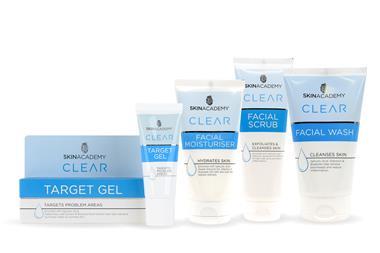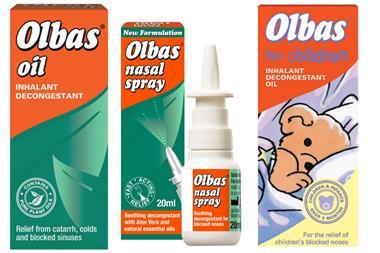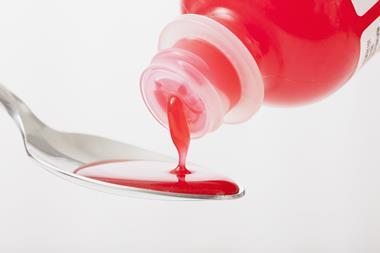With 18% of shoppers not realising their local shop has a health and beauty fixture, retailers need to spray extra volume into their sales and give the category a makeover
When it comes to fresh and chilled food many c-stores now rival the mults in terms of quality and range. So why isn’t the sector choosing a similar approach with health and beauty?
After all, there’s a definite demand for products that give customers the feel-good factor. Consumers use health and beauty staples on up to 250 occasions every week (ETCD Usage) – and more than a third of convenience customers say they’re looking to shop the category in-store (Europanel).
But despite this clear appetite some stores still stick to stocking just a few SKUs, and keep what they do have hidden behind the till. High prices, and the temptation for shop-lifters, are often the barriers to going bigger – but this can become a self-fulfilling prophecy.
According to Partners for Growth data, 18% of shoppers don’t realise their local shop stocks health and beauty lines, and unless those products are more visible in-store, they’re unlikely to change their view.
So could category-shy retailers be missing a trick? Maybe, since according to Richard Inglis, owner of Parkview Retail Ltd, who runs three Co-op Welcome stores in Southampton, health and beauty is an important part of his core custom.
He explains that his stores’ approach to health and beauty evolved when he made the switch from Spar to Co-op.
“That’s when we had the major change-around,” he says.
“It used to be a fairly limited section stocked behind the till for security. Nowadays I think that our stock is really wide-ranging. We’ve probably got about three metres of health and beauty, and that ranges from your spray-on and roll-on deodorants for men and women, your dental stuff – toothpaste and toothbrushes – through to skincare, hair care and shower gels. Overall, there’s quite a lot that we do when you think about it.”
To make things easier for time-poor shoppers, health and beauty stock is out on the shop floor, and Richard is careful to mitigate any security risks this approach poses.
He maintains that deodorants have always been a “popular shoplifting line” because they’re compact (so easier to pocket) and quickly re-sellable.
“There’s always a risk when putting them out on the shop floor,” he admits, “but I think here you have to use a little common sense. So, we’ll put them out where there’s really good eye-line from the tills so we can see what’s going on.
“Also, if a product comes in, say, a pack of six, we’ll put two or three products out on the shelves and the rest out in the back. That way, if someone does try a little amateur shelf-clearance then they’re not leaving with absolutely everything we’ve got.”
When customers come in-store for health and beauty, they’re often on a distress mission for can’t-do-without bathroom cabinet staples such as toothpaste. And it’s here that the category can provide leverage for bigger baskets – c-store shoppers on a health and beauty mission pick up 4.8 items versus the sector average of 2.7 (HIM).
Donna Morgan, from Brownlie’s Best-one Biggar, confirms that the distress mission is key to health and beauty sales at her store.
“We’ve got seven metre-and-a-half health and beauty shelves in the store, mainly for people looking to make distress purchases. What we stock is 90% branded – and we’ve definitely a few premium brands in there. We’re in an affluent area and I find that’s what our customers are after.”
One of the lesser-known beauty brands that the store retails is Faith in Nature, an ethical brand recognised for its eco-friendly approach. It’s a product that you might expect to find in a health store rather than a c-store, but that hasn’t stopped Donna investing in the line.
“It really is very popular for us,” she says. “We got the Faith in Nature range in basically because our customers asked for it – we do both the shower gel and the conditioner. It’s £5.50 versus about £3.50 for a standard line, so it’s a better margin and a good product, which is exactly why it’s here on the shelves.”
Miles of smiles
“ Plymouth University, with support from The Wrigley Company, found that if all 12-year-olds across the UK chewed sugar-free gum three times a day the NHS could save up to £8.2m every year – the equivalent to 364,000 dental check-ups. With this expert advice in mind, it is important that retailers understand that gum is a must-stock at the till point, to help capitalise on oral care advice and increase their sales.”
Julio Guijarro, Wrigley marketing director for GB and Ireland.
Brands in demand
Back in Southampton, Richard agrees that a brand-driven strategy offers the biggest win for retailers in the category.
“We’ve got a lot of young students in Southampton, and they’re definitely brand conscious with what they buy from us,” he says.
“People are more flexible than maybe they used to be, but I think we still need to offer those main brands. Shoppers can be very particular about a certain brand of shower gel or shampoo and if you haven’t got quite the right product they still want something very similar or from the same company.
“There is a place for own brand in health and beauty, definitely, but it tends to be popular in more basic items such as toothpaste.”
He adds that as the category is so extensive it pays to constantly monitor sales, especially near the top of the range. For example, his stores culled the amount of high-end hair products they offered after noticing customers were opting for less-premium alternatives.
In a similar vein Richard is also careful about stocking high-value health and beauty accessories such as electric toothbrush heads.
“It is a big market but the only products like that we sell are the very simple children’s electric toothbrushes that use an AA battery. We tend to stay away from the heads because they’re very high-value and once you start getting into it the sector gets complicated quite fast.
“To be honest, if you’re organised enough to buy that kind of stuff then you’re going to want to buy them from places such as Amazon or Boots to get the best deal. In a distress situation a decent manual toothbrush will do the job just as well.”
Fix up, look sharp
Category advice from Partners for Growth
Core toiletries (everyday cleaning and caring needs) are the most important segment for convenience stores.
Focus on core toiletries, offering a breadth of needs rather than depth of choice. Use a planogram to ensure that relevant products are grouped together and easy to shop.
High-value toiletries can be a theft hazard, so ensure that you can see the toiletries shelves from the till to limit losses.
Men are more likely to spend money on specialised products if they are separated into a male grooming area. Make sure these products are not sited next to fem-care as this can make male shoppers uncomfortable.
However diverse your health and beauty offer, presenting it well is incredibly important, as Duncan Hill, managing director at HL POS Centre, explains.
“With this category, presentation is everything,” he says. “Even standard products can be given a premium look with the right display system – one that creates attractive, neat-looking fixtures with labels facing forward and product at the front of the shelf, no matter how many different sizes and types of packaging you’re dealing with.
“Not only will this drive sales, but by creating clear product channels and maximising available shelf space it is possible to get more product onto a display without it looking messy, which is perfect for retailers who want to offer as much choice as possible to customers.”
HL POS Centre offers two toiletry-friendly shelf solutions – a ComseLine system which allows stores to highlight prices while accessorising the fixture, and SlimLine, which makes each product visible even on tightly-set shelving.
“As many health and beauty products are not packaged in tall containers this means that store owners can fit in more shelves, and more product, without the labels getting in the way,” he adds.
Whether your shoppers are into high-end hair wax, or just want to top-up on own-brand cotton buds, investing just a little more time in health and beauty can pay off.
As Richard points out, just stocking the market-leading brand in each product sector, plus an alternative, is enough to create a credible line. “I think that’s the minimum you need to succeed with health and beauty these days,” he says, “but it’s surprising just how many different kinds of products people will buy if they’re on shelf.”
With this in mind it might be time to give your health and beauty selection a spring edit – and get your balance sheet, as well as your customers, looking good.
Deodorants offer the sweet smell of success
As summer fast approaches a key mission for shoppers will be grabbing the deodorant and anti-perspirant they need to keep them fragrant when the temperature rises.
So it’s not surprising that Partners for Growth identify deodorants as one of the core c-store health and beauty top-up buys and a smart way into the men’s toiletry market – which is growing 3% year on year (Partners for Growth).
To maximise sales with the younger end of the sector, Lynx has given its latest product, Lynx YOU, a £4.5bn marketing push. New ads explore the different faces of modern masculinity to complement a fragrance that’s fresher and more subtle than some of its stronger rivals.
“We’re expecting Lynx YOU to be one of our most popular ranges to date,” says Dilraj Athwal, brand manager for Lynx at Unilever UK.
“As one of the UK’s most trusted brands, we’ve designed the YOU range to encourage consumers to embrace their individuality. The new marketing campaign builds on last year’s launch of Find Your Magic, and demonstrates to men that everyone has something to offer.”
Meanwhile, the popular Dove brand is extending its reach with a range-wide reformulation featuring new variants. This includes the c-store-friendly Go Fresh deodorant collection, which now includes a pear & aloe vera product offering 48 hours of freshness.
“This variant has been designed to not only leave consumers feeling fresh throughout the day, but to also provide them with the skin care they expect from Dove,” says Sarah Atkins, Dove Deodorants senior brand manager.
“It taps into the growing demand for exciting and premium fragrances with a final product which really does smell great.”
































No comments yet